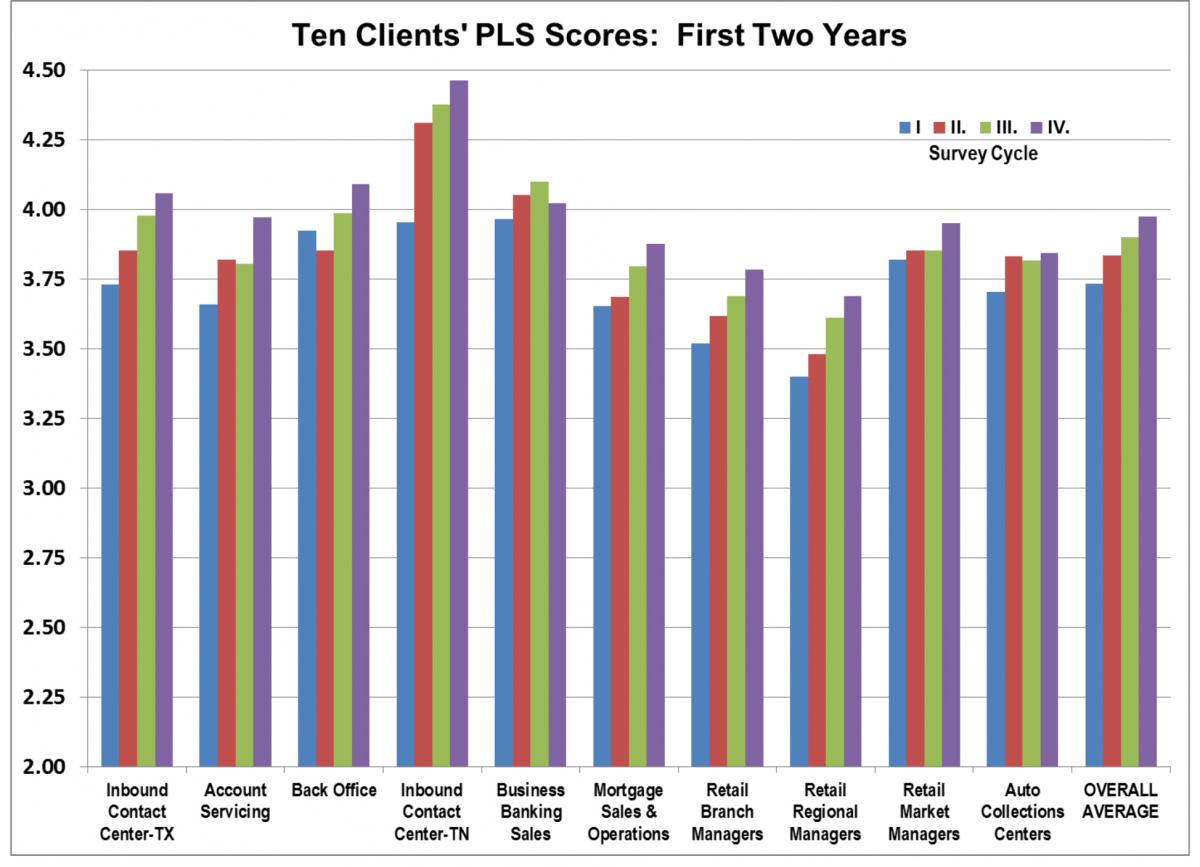Want Employee Engagement? Just Ask!
Do you know how your leadership behavior affects the performance of your team? Does your impact match your intent with your direct reports? Are your actions unknowingly causing employee disengagement? One of the best ways to really know the answers to these questions is to ask for and receive candid feedback from your direct reports. This is what the Precision Leadership® Survey (PLS) does—anonymously. The survey is not intended as an evaluation, but rather as a continuous improvement tool for leaders at every level. “One of the consistent key behaviors of successful leaders is demonstrating awareness of their impact,” states David Uhl, senior vice president, Aubrey Daniels International.
The key point of Uhl’s statement is that for leaders to be effective, they must invest in understanding how their words and actions affect others, whether intentional or unintentional. The PLS is not so much about “the number,” but rather about leaders taking away one or two key learnings from each round of feedback and making visible adjustments in their day-to-day practices based on what they learn. When leaders use their direct reports’ candid upward feedback in that way, they see both quantitative and qualitative improvements in survey results over time. The score is important only in that, in cycle after cycle, it reflects ongoing improvement in manager/direct-report relationships and trust (see table below). The PLS enables leaders to translate candid upward feedback into positive, actionable change.
Uhl, who has implemented thousands of such surveys, emphasizes that the survey process most often is part of a Precision Leadership engagement with clients. As such, it plays a very important role in understanding leadership behaviors that are negatively or positively influencing the behavior and performance of direct reports. It’s important to identify both, which is why survey participants have the opportunity to express their perspective on what their leader should “Stop, Start, and Continue” doing. The survey includes relationship questions about trust, reciprocity with one’s manager, and the manager’s self-awareness. Questions on specific Precision Leadership skills—useful positive feedback, helpful constructive feedback, and clarity of expectations—are also part of the survey experience. “As seasoned coaches with behavioral expertise, we know how to help clients improve their results,” Uhl explains. “In fact, data we’ve compiled across a range of client industries shows consistent incremental improvement over the course of the first two years, following initial training and coaching in Precision Leadership.

“Even when a leader is doing a great job and there’s not very much room for improvement, his or her direct reports still invest the time and effort to give specific feedback about what’s working and what subtle adjustments that leader might make,” says Uhl. He adds, “Nobody’s perfect. So whatever the case, even the rare extremes of harsh feedback and low numbers, or high numbers with limited critical feedback, I tell leaders that their next step after getting the survey results is to reinforce their direct reports’ behavior of providing candid upward feedback. That’s the only way we can improve no matter how good we are.” It’s also important to note that when used truly as a developmental tool, the rise in survey scores correlates directly with third-party measures of employee engagement.
Administering the PLS routinely serves as an ongoing barometer of culture and direct-report relations, which strongly affects team and organizational performance. ADI consultants and coaches know how to guide leaders to increase their individual results—and the corresponding improvements in engagement metrics that improved leadership brings. One banking client, for example, derives such value from the PLS that it has conducted them on six-month intervals for the past 12 years!
ADI’s PLS reports, presented when the survey has concluded, also provide feedback data on voluntary participation in the surveys. Responses to the open-ended questions at the end of the survey function as a type of check-and-balance element. If the comments decrease significantly in quantity or specificity, that’s often a warning sign, meaning that people may not be comfortable being candid. This can be a red flag indicating that leaders need coaching on their skills and/or reactions to the survey results.

Survey debrief support proves beneficial and comes in the form of interpreting key patterns or themes in the feedback and determining how best to act
upon them. “We help leaders focus on one or two actions that need improving,” explains Uhl. “You can say ‘thank you’ and that may or may not be positive reinforcement for providing candid upward feedback to your manager. We’ve seen over time that when a manager summarizes the feedback saying, ‘Here are a few key themes from what I heard you say,’ and then here are the one or two things I will be working on based on what I learned,’ that their direct reports know they have been heard. When people see any sort of good faith effort on the part of that manager to be responsive, not to everything they said, but to some of what they said, that functions as positive reinforcement for giving their boss, candid feedback.”
According to Uhl, even “old school, kick-tail-and-take-names leaders” who are observed by their people putting forth good-faith efforts to act on the feedback provided, see their survey results improve. In coaching sessions following PLS, leaders are encouraged to conduct a brief, high-level, theme-focused conversation with their direct reports during which they share (a) here are a few things (think: bullets) I learned from this survey, (b) these are the one or two adjustments I am making based on what I heard you say, and (c) going forward, this is how you can help me with these changes.



